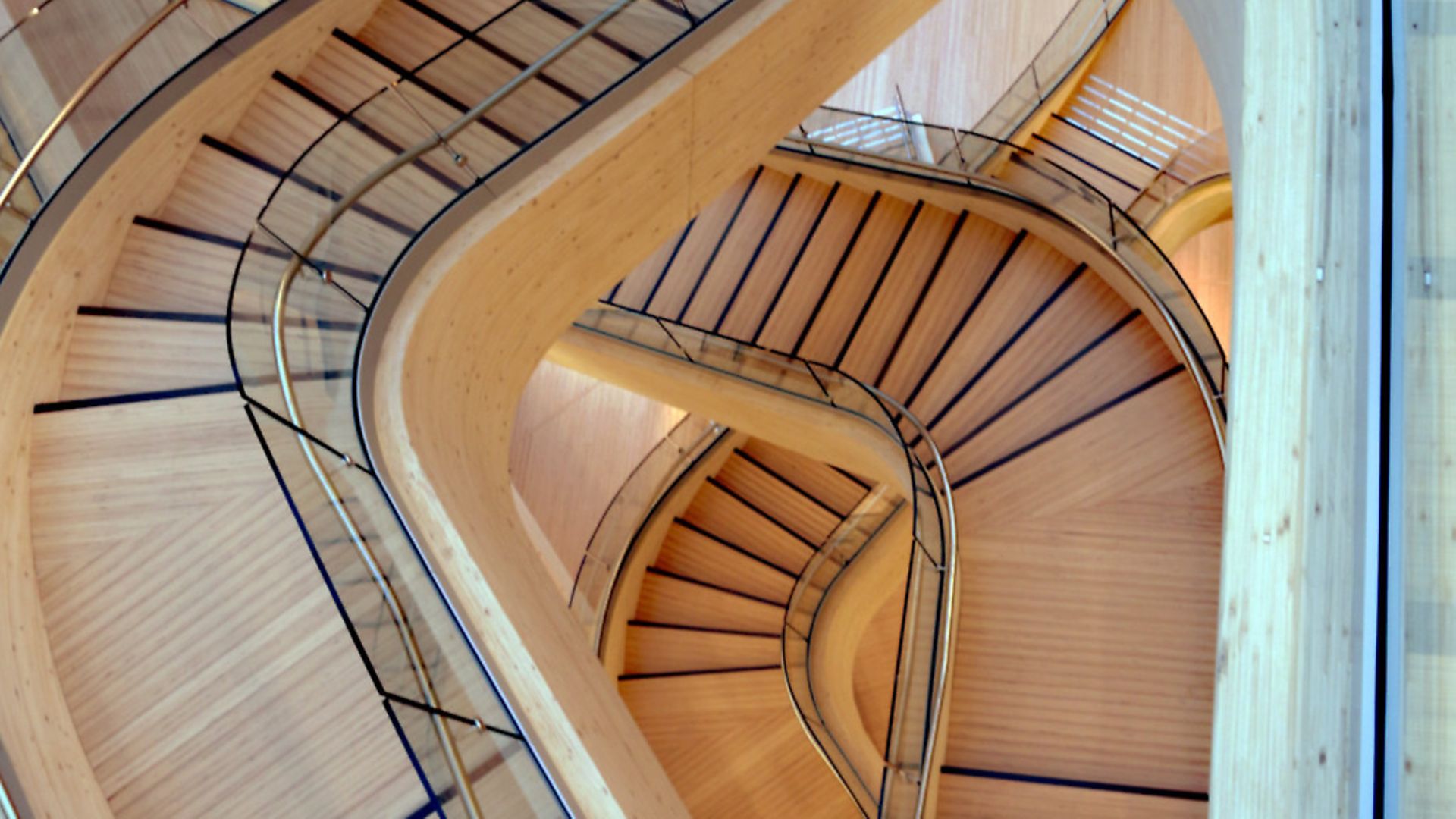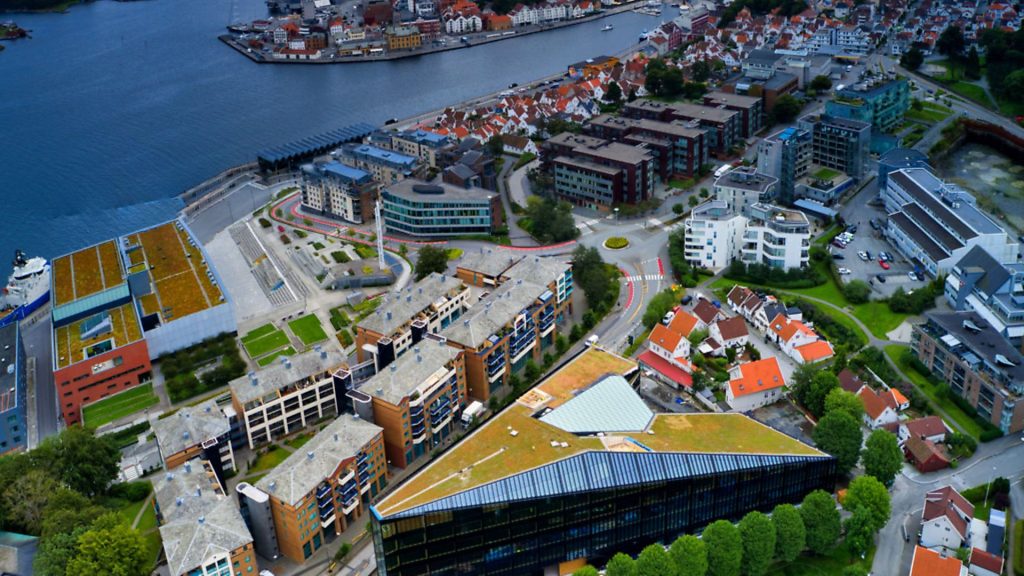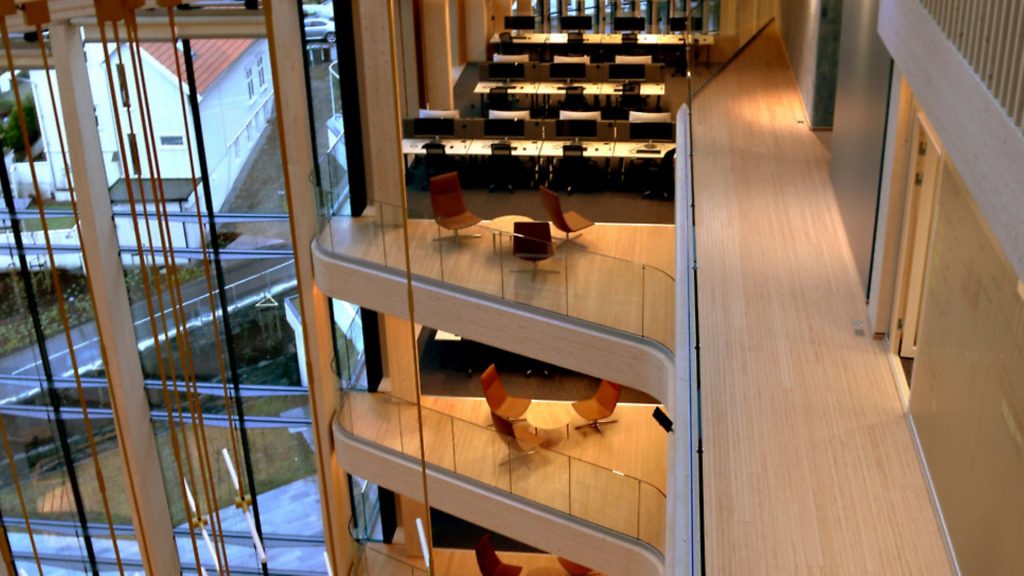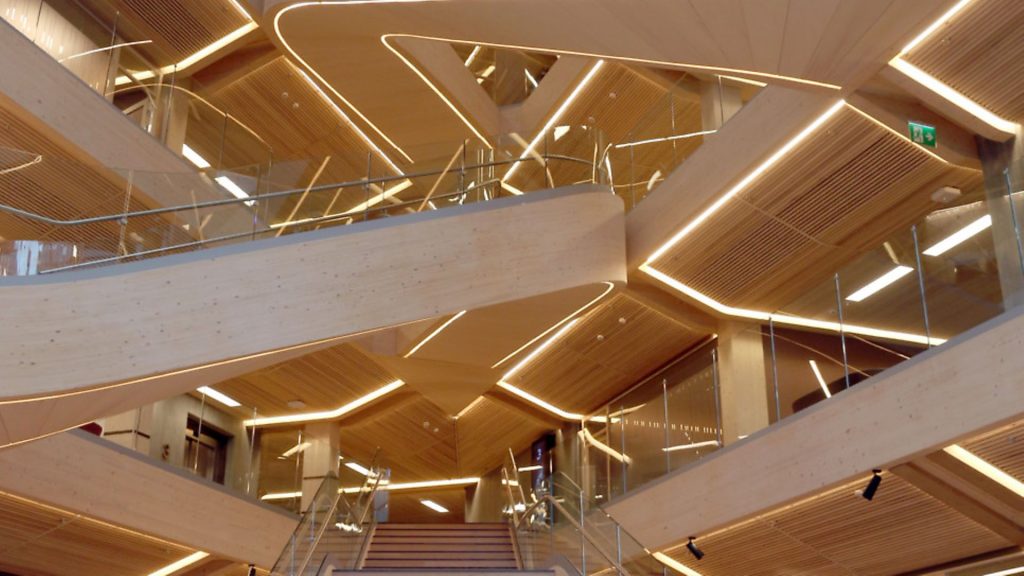
Editor-at-large ALASTAIR CAMPBELL travels to Norway and finds a breathtaking building and a salutary lesson for a Brexit-entangled Britain.

It is not the first time a new city has blown me away. Nor the first time a building has blown me away. But it’s the first time I can recall both happening on the same day. Welcome to Stavanger, Norway’s fourth biggest city, and in a moment let me take you on a tour of a remarkable new construction here.
This is not one of those borderline corrupt freebies where journalists get given a nice trip by a travel agent, an airline, a resort or a hotel to write a puff piece of how fantastic everything was, give it five stars and recommend it for “the holiday of a lifetime”.
I’m not saying I was here for the good of my health – though the air was crisp and fresh and wonderful to breathe when you’re used to the pollution of London. I came for a paid speaking gig, which arose because a Stavanger banker saw my BBC documentary on depression on Norwegian television and thought his staff and clients might like to hear from me, less about my depression than why my country is having a Brexit-induced nervous breakdown.
My mother (RIP) always found it odd that organisations around the world would pay me inflated sums to hear my views and experiences, and at times so do I. But it pays the bills handsomely (all taxes paid, none of that personal services company tax dodging), allows me to do my politics and campaigns for free, gets me out of the house and for a few days away from what is surely the most dispiriting election campaign of our lifetime. That first TV debate, Boris Johnson’s lies and bluster in the second one – oh my God! Just go away.

Not that there was any real escape. Sky News was on 24/7 in the hotel lobby and every time I came or went the screen seemed to be filled with Prince Andrew, Andrew Gwynne, Angela Rayner, John McDonnell or a buffering Matt Hancock. Also, in common with many countries around the world, Norwegians are following our political drama with intense interest, not least because of the consequences for them, so virtually everyone I met wanted to ask “what the hell is going on?”
Was it David Davis who used to blather about “Norway plus plus plus” during his time as a failing Brexit secretary? The Norwegians definitely view us as ‘Britain minus minus minus’. When I did my show-of-hands exercise at a dinner attended by more than 300 people, (filmed evidence available on my Twitter and Instagram feeds if you go back a few days) and asked whether they felt more positively or negatively about the UK as a result of Brexit, there was a 100% vote for negative.
When I asked if Boris Johnson as prime minister was good or bad for the image of the UK, one hand went up for good, 300+ for bad. So, twice as many hands went up for “anyone here support Burnley as their English team?” as think our prime minister is a good thing for the country he supposedly leads.
Everywhere you go in the world right now, people feel sorry at what has happened to our country, and the arrival of Johnson as PM and Jeremy Corbyn as the alternative has added a sense of us being a laughing stock. Sad, sad, sad.

So why did I fall in love with this place? Fourteen reasons to start with: Clean. Fabulously efficient airport. Low on traffic. Beautiful waterfront perfect for an early morning run. An all-year open-air swimming pool. Lovely small parks. Friendly people. Nice statues. Interesting museums – who knew the canning industry could have a whole museum to itself? A 900-year-old cathedral (where former Lord Chancellor Charlie Falconer sang as a schoolboy chorister, I later learned). An old town with white painted wooden houses dating back centuries. A cobbled shopping centre not overly dominated by global brands. Good food, especially the local halibut. A lovely hotel with fabulous views from my 13th floor room across town, sea and hills in the distance.
I found myself sending photos to SNP MP Ian Blackford with the message: “This is what Fort William should look like?” Anyone who knows Fort William at the heart of his vast Ross, Skye and Lochaber constituency will be aware of the wondrousness of the natural scenery – he replied with a fabulous picture of Ben Nevis – set against the ugly back-to-front shops and hotels facing the water.
Reason 15 was the building that blew me away. I confess that when my hosts, bankers Thor Christian Haugland and Camilla Parker Rege, asked if I would like a tour of SR-Bank’s new HQ, I said “yes” out of politeness. Several hours later, they were having to push me out of the door so they could get on with their work.
The reason they were keen to show it off – Stavanger is the Aberdeen of Norway by the way, the oil and gas capital – was to highlight a positive environmental story. They had yet to move in fully. The official opening will happen this week, by the young newly-elected Labour mayor, Kari Nessa Nordtun. But the first waves of staff were in and if they are anything like me they will be saying “wow” for quite a while.
“Welcome to the biggest wooden building in Europe,” said Haugland as we pulled up outside. Virtually all of the construction materials above ground level are wood, and so are the floors, ceilings and stairways which link the seven floors. Twelve percent beech glulam (glued laminated timber), 29% spruce glulam and 59% spruce solid wood. Eighty-five percent of the contractors were sourced locally, adding to the positive environmental impact.
What is not wood is mainly glass. Inside the main entrance, beyond the wooden reception desks, is what looks like a suspended glass meeting room. Though there are lifts, most people eschew them to enjoy walking up a series of beautifully designed sweeping wooden staircases. It feels at times like being on an old ship.
When I ask why the overhead lights, hanging low from the roof into the atrium and looking like slim cigarettes, appear constantly to be moving slowly, they explain that they are linked electronically to buoys in the sea and they move as the waves do. It is lighting as art installation, and soothing to watch.
Camilla Parker Rege – mother Norwegian, father British, and I quickly discover she has heard every Parker Bowles joke going – shows me the wooden boardroom with the wooden table and locally made wooden chairs. We walk onto the wooden terrace to take in a view of the sea. Then the canteen where people sit on long wooden benches at long wooden tables. Even the joists which hold the whole place together are mainly made of wood.
But surely, I ask, so much wood is a greater fire risk? Not so, says Haugland. “In the case of fire, wood will take longer to burn than concrete. Concrete is combined with steel to keep it ‘together’, and when steel gets warm, it suddenly starts to go soft, then suddenly a building can collapse.”
The other major environmental factor is in CO2 storage, 2.520 tonnes of it. “If you use wood as a building material, you store CO2. If the wood was burnt or made into paper, the CO2 stored in the wood would be let out into the atmosphere.”
Nobody, up to and including the CEO, has their own desk. Indeed if every member of staff was in at the same time there would not be enough space. The calculation is that there will never be more than 70% of staff inside the building, usually a lot less. They have team zones but within them it is first come first served to the desk and computer of your choice.
I was so awestruck by the whole thing that I snapped away on my iPhone and sent the pictures to the only architect I know who is a personal friend, Amanda Levete, who was responsible for the new entrance, courtyard and gallery at the V&A, the MAAT museum in Lisbon, and the spaceship press box at Lord’s cricket ground, for which she won the Stirling Prize.
She too was impressed. Another “wow” reaction, even to my amateur photos. She rightly guessed the identity of one of the architects, Helen & Hard, who shared the project with a firm called SAAHA. Both are Norwegian, and Helen & Hard are from Stavanger.
One of the reasons SR-Bank opted for such a dramatic building plan was that the site is close to a collection of old wooden houses protected as part of a UNESCO heritage site, and they wanted something that fitted in. Their new building is now opposite the old one, which already looks a little tired and run down. It is up for sale. I ask if they have any interested buyers.
“How about the British government buys it?” suggests Haugland. “You’re going to need all the friends you can get after Brexit!”
We’re going to need ideas and energy too. It just depresses me that both of those qualities appear to be in such short supply in Britain right now, where Brexit is like a horrible wet cloth being thrown across anything that might be good, and actually allow us to feel the Great in Great Britain. Come to a place like this and for all the joy it inspires it is matched by a sense of dread about what my own country has become, with worse ahead of us unless this Brexit damage can be undone and the political choices for the UK improved.









